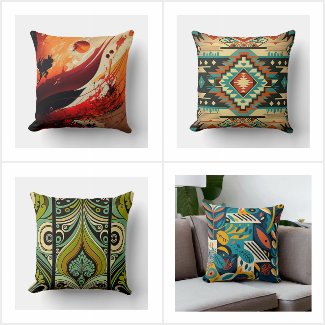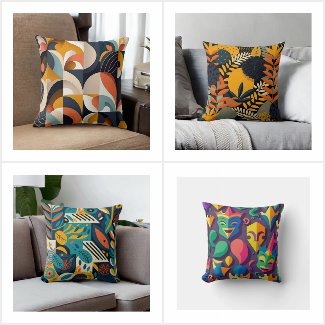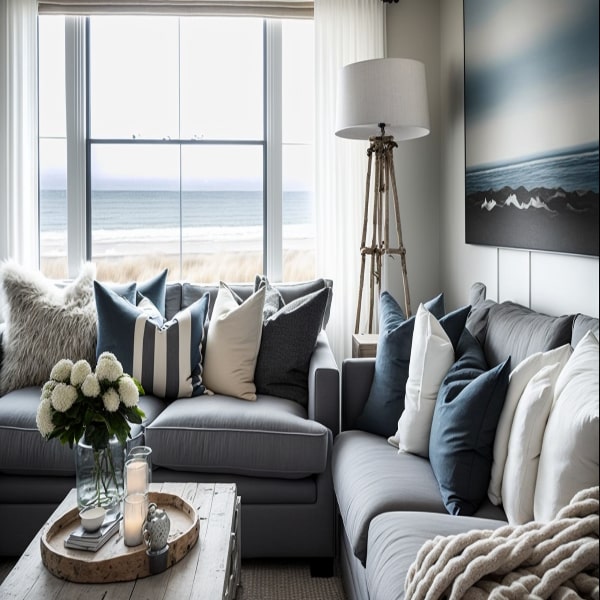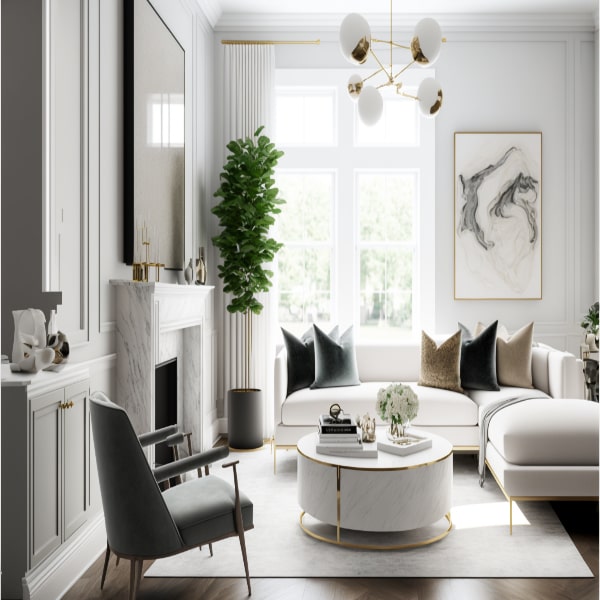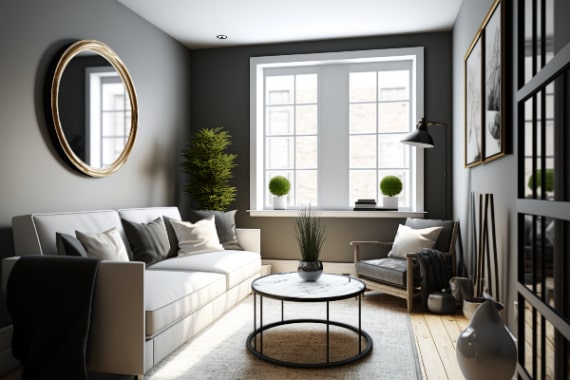If you love the idea of a bold and colorful living space that feels lively and expressive, you may be interested in creating a maximalist look. Maximalism is all about layering and mixing different styles, textures, and patterns to create a rich and visually interesting look. This year, theres a new term to look out for, minimilist or minimal maximalism and it’s set to be one of the biggest trends in home decor in 2023. Below are some examples of what typical Maximalism might look like in a living room. We will look at both traditional and the more modern minimilist take on this bold style choice. Read on for more examples where I will explain the key differences between the two styles
Table of Contents
Diveintodecor.com is reader supported. This means that when you purchase through links on our site, We may earn an affiliate commission. We only recommend products we believe in. Thank you for supporting our site.
Traditional Style Maximalism
Traditional maximalism is a style that emphasizes the use of ornate, decorative elements and a wide variety of patterns and textures. It is often associated with the Victorian and Edwardian eras, and is characterized by the use of rich, opulent materials, such as velvet, silk, and brocade, as well as intricate details and embellishments. The overall effect is one of luxury and opulence, and the goal is often to create a sense of grandeur.
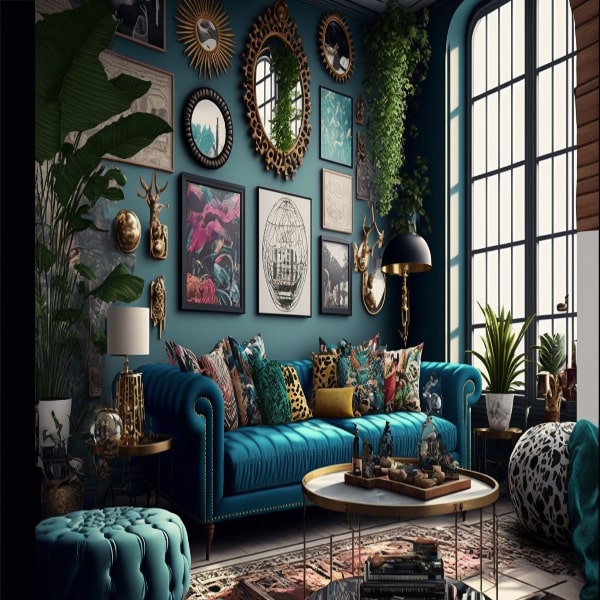
What is Minimal Maximalism?
Minimal maximalism is a design philosophy that combines elements of minimalism and maximalism. It involves using a minimal color palette, clean lines and a minimalist aesthetic, but adding in bold, statement pieces. It is characterized by the use of a limited colors, simple forms and a focus on functionality, but with a few focal pieces, textures, and patterns that add depth to the overall design. In this way, minimal maximalism can be seen as a compromise between the simplicity of minimalism and the ornateness of maximalism.
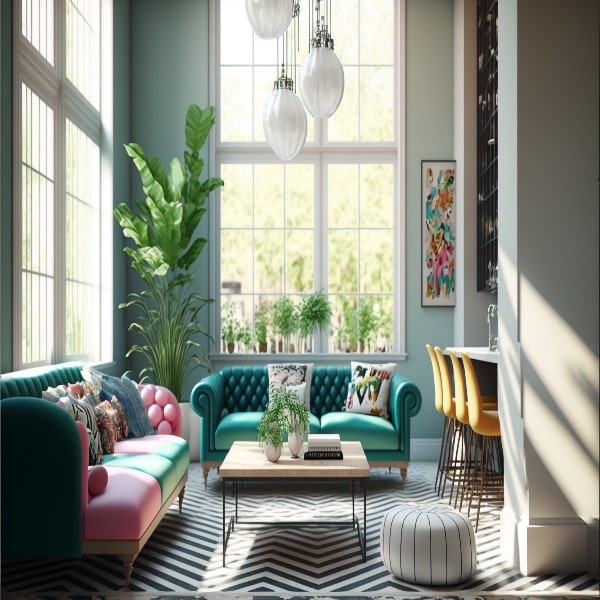
Maximalist is More – Minimalist is Less
Maximalism and minimal maximalism are two design philosophies that may seem similar at first, but are actually quite different.
Maximalism is all about big and bold, with an emphasis on ornate decorations, rich textures, and striking patterns. It’s about creating a sense of luxury. Rooms decorated in a maximalist style are often described as being “over the top” and “overwhelming” in a good way. It’s a bold statement style that is not for the faint of heart.
Minimal maximalism, on the other hand, is a more subtle and refined approach to design. It combines some elements of minimalism and maximalism to create a look that is simple and striking. The focus is on clean lines and a minimalist aesthetic, but with the addition of bold statement pieces that make a big impact. The color palette is usually limited, but the use of a few statement pieces, textures, and patterns add interest and depth to the overall design. It’s a compromise between the simplicity of minimalism and the detail of maximalism.
Essentially, maximalism is all about going big, while minimal maximalism is about creating a balance between simplicity and impact for a refined and elegant space.
A Little History on the Popularity of Maximalism
Maximalism has had several periods of popularity throughout history. One of the most well-known examples is the Victorian and Edwardian eras, during the latter half of the 19th century and the early 20th century. During this time, there was a strong emphasis on opulence and grandeur, and this was reflected in the use of luxury materials, grand decorations, and a wide variety of patterns and textures.
In the 1960s and 1970s there was a resurgence of interest in bold, colorful, and eclectic design. This was a time of experimentation and breaking away from traditional design norms, and maximalism was seen as a way to make a bold statement and express individuality.
More recently, designers and homeowners have started to once again embrace the use of bold patterns, bright colors, and textured elements to create spaces that are striking and inviting.

It’s worth noting that maximalism as a design trend is typically associated with periods of cultural and societal change. For example, in the 60s and 70s, there was a movement away from traditional design norms, and maximalism was seen as a way to break away from the status quo and express individuality.
To some, maximalism could even be seen as the need to express yourself in a bold and extravagant way, as a way of reclaiming freedom and individuality. It’s popularity can often increase after a period of hardship or repression. Maximalism was often associated with counterculture movements and a desire to break away from the traditional. Almost as a form of rebellion
Here are some tips and ideas for creating a minimalist maximalism living space:

Keep the color palette simple and neutral, but add in a few bold accent colors for visual interest.
Use clean lines and minimal furniture, but add a few statement pieces for a big impact. Incorporate different textures and patterns to add depth and interest to the space.
Use a combination of natural and machine-made materials, such as wood, metal, and glass, to create a sense of balance. Incorporate plants or flowers to bring a sense of nature.
Don’t be afraid to mix and match different styles, such as traditional and modern, to create a unique and eclectic look.
Use lighting to create a sense of drama and to highlight certain elements in the room and mirrors to reflect light and create the illusion of more space.
Keep the overall design simple and uncluttered, but don’t be afraid to add in a few unexpected elements to create a sense of surprise and interest.
Be mindful of scale and proportion when selecting furniture and decor, to ensure that everything is in balance.
By following these tips, you can create a minimalist maximalist living space that is both simple and beautiful, and most importantly, one that reflects your unique sense of style.
And Here are some tips and ideas for creating a maximalist living space:
Mix and match different patterns and prints. Maximalism is all about layering and combining different patterns and prints to create an eclectic look. Don’t be afraid to mix and match different styles, such as florals, geometrics, and animals, and use a variety of scales and colors.
Use a wide range of textures and materials. A maximalist living space should texturally interesting. Consider using a variety of fabrics, such as velvet, wool, and corduroy, and mix in some metallic accents, such as brass or copper, for added interest.
Add some colorful accents such as throw pillows, rugs, and wall art. Choose items that reflect your personal style and taste, and mix and match different shades and patterns to create a cohesive look.
Draw inspiration from different styles and periods, you can mix pieces from different eras. You could combine vintage and modern, or mix and match different cultural styles to create a globally-inspired look.
When looking for inspiration, remember, this style is all about you, incorporate your hobbies and interests.
Plants and greenery are great for texture. Choose a variety of sizes and types of plants, and mix in some artistic pots and planters for visual interest.

Aliss Anos
Home Decor Enthusiast, Blogger & Illustrator
Aliss is a passionate home decor enthusiast, illustrator, and the creative mind behind DiveIntoDecor.com. She shares her love for all things stylish and cozy, offering readers a wealth of knowledge, tips, and inspiration to transform their homes into beautiful sanctuaries. As an illustrator, she enjoys designing modern wall art, available on sites like Zazzle and Society6.
When she’s not busy curating content for her blog, Aliss loves exploring the latest trends and DIY projects on Pinterest and Instagram. Keep up to date with DiveIntoDecor.com’s latest updates by connecting with her on her favorite platforms:
